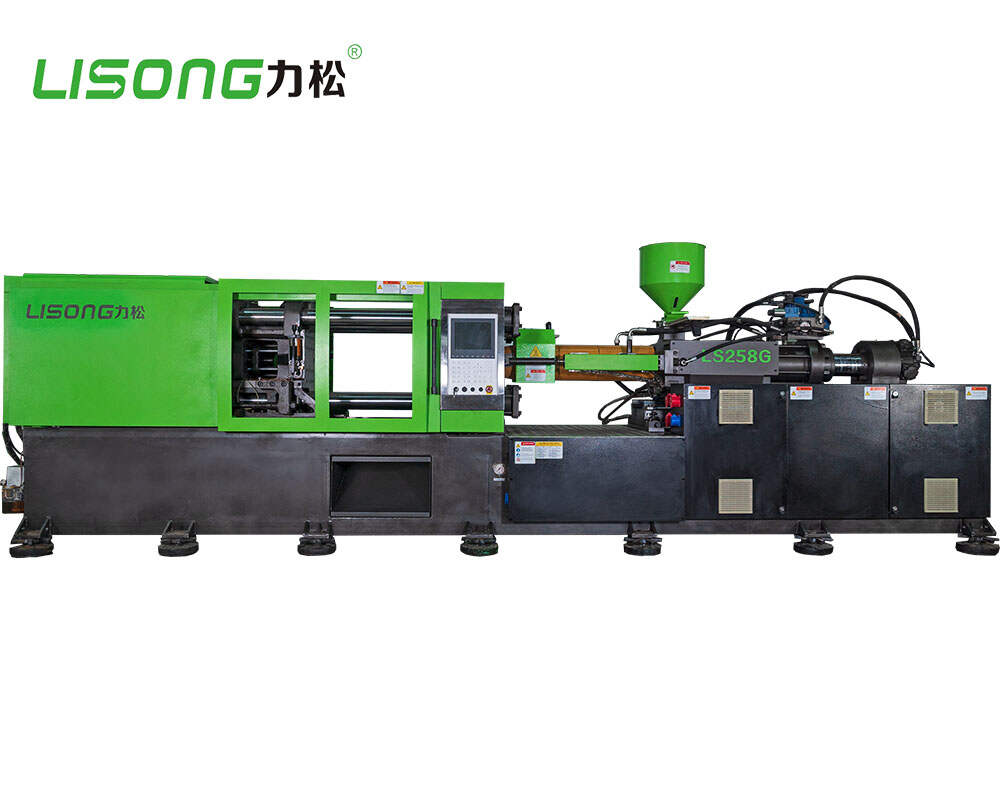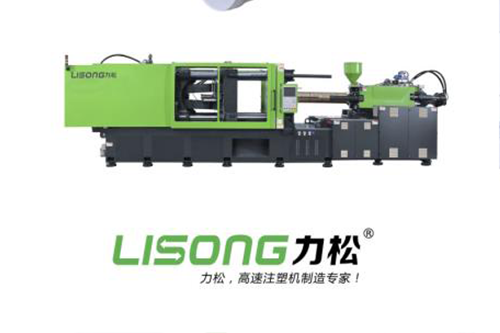Email format error
Email cannot be empty
Email already exists
6-20 characters(letters plus numbers only)
The password is inconsistent
Email format error
Email cannot be empty
Email does not exist
6-20 characters(letters plus numbers only)
The password is inconsistent

Plastic Injection Moulding Machine Manufacturer
Latest Blog

Injection Molding Machine for Plastic Cutlery Factory: Revolutionizing Manufacturing
The modern manufacturing industry relies heavily on automation and advanced machinery to streamline production processes and enhance efficiency. One such innovation that has become pivotal in the production of plastic products is the injection molding machine. Specifically, for a plastic cutlery factory, the injection molding machine is an indispensable asset that ensures precision, speed, and cost-effectiveness. This post explores the intricacies of the injection molding machine for plastic cutlery factory operations, detailing its benefits, operational process, and why it is a game-changer in the manufacturing sector.
Understanding Injection Molding
What is Injection Molding?
Injection molding is a manufacturing process used to produce parts by injecting molten material into a mold. This process is widely used for fabricating items from plastic, including plastic cutlery. The technology behind injection molding machines has evolved significantly, making them highly efficient and versatile for a range of applications.
The Role of Injection Molding Machine for Plastic Cutlery Factory
In a plastic cutlery factory, the injection molding machine plays a crucial role in transforming raw plastic materials into finished cutlery products. These machines are designed to handle high-volume production runs with remarkable consistency and precision, making them ideal for producing large quantities of forks, knives, and spoons.
Components of an Injection Molding Machine
Clamping Unit
The clamping unit is responsible for holding the mold together during the injection and cooling processes. It applies sufficient force to keep the mold halves securely closed, preventing any molten plastic from escaping.
Injection Unit
The injection unit is where the plastic granules are melted and injected into the mold. This unit consists of a hopper, a heating barrel, and a screw mechanism that helps in feeding the molten plastic into the mold cavity.
Mold
The mold is a critical component as it determines the shape and features of the final product. Molds are usually made from durable metals like steel or aluminum to withstand high pressure and repeated use.
Control System
Modern injection molding machines are equipped with sophisticated control systems that allow operators to program and monitor the entire production process. These systems ensure that each phase, from melting to cooling, is optimized for efficiency and quality.
Benefits of Using Injection Molding Machine for Plastic Cutlery Factory
High Efficiency and Productivity
One of the primary advantages of using an injection molding machine for plastic cutlery factory operations is the ability to produce a large number of items in a short period. These machines can operate continuously, ensuring that production targets are met without compromising on quality.
Precision and Consistency
Injection molding machines are renowned for their precision. Each piece of cutlery produced is identical to the others, ensuring consistency in product quality. This precision is particularly important for items like plastic cutlery, where uniformity is key to customer satisfaction.
Cost-Effectiveness
While the initial investment in injection molding machines can be substantial, the long-term benefits far outweigh the costs. These machines reduce labor costs, minimize material wastage, and ensure that production is as efficient as possible, leading to significant cost savings over time.
Versatility
Injection molding machines are versatile and can be used to produce a wide variety of plastic products. In a plastic cutlery factory, this means the ability to manufacture different types of cutlery with varying designs and specifications without the need for multiple machines.
The Injection Molding Process in a Plastic Cutlery Factory
Raw Material Preparation
The process begins with the preparation of raw plastic materials. These materials, typically in the form of granules or pellets, are loaded into the hopper of the injection unit.
Melting and Injection
The granules are then heated in the barrel until they reach a molten state. The screw mechanism pushes the molten plastic into the mold cavity under high pressure, ensuring that the material fills every part of the mold.
Cooling and Solidification
Once the mold is filled, the plastic is allowed to cool and solidify. The cooling time is critical and depends on the type of plastic used and the thickness of the cutlery being produced.
Ejection and Finishing
After the plastic has solidified, the mold opens, and the finished cutlery is ejected. Any excess material or flash is trimmed off, and the cutlery is subjected to quality checks before packaging.
Key Considerations for Choosing an Injection Molding Machine
Production Volume
When selecting an injection molding machine for a plastic cutlery factory, it is essential to consider the production volume. Machines with higher clamping force and larger shot capacity are suitable for large-scale production runs.
Material Compatibility
Different plastics have varying melting points and flow characteristics. It is crucial to choose a machine that is compatible with the type of plastic used in the cutlery production.
Precision and Accuracy
For products like plastic cutlery, precision is paramount. Machines with advanced control systems and high-precision molds are necessary to ensure that each piece of cutlery meets the required standards.
Energy Efficiency
Energy consumption is a significant factor in the overall cost of production. Modern injection molding machines are designed to be energy-efficient, reducing operational costs and the factory's environmental footprint.
Innovations in Injection Molding Technology
Automation and Robotics
The integration of automation and robotics in injection molding machines has revolutionized the manufacturing process. Automated systems can handle material feeding, mold changes, and product inspection, further enhancing efficiency and reducing labor costs.
Real-Time Monitoring and Control
Advanced injection molding machines come equipped with real-time monitoring and control systems. These systems allow operators to track key parameters such as temperature, pressure, and cycle time, ensuring optimal performance and quick adjustments when needed.
Sustainable Manufacturing
With increasing emphasis on sustainability, modern injection molding machines are designed to minimize waste and energy consumption. Innovations such as recycled material compatibility and eco-friendly production practices are becoming standard in the industry.
Challenges and Solutions in Injection Molding for Plastic Cutlery Factory
Material Selection
Choosing the right plastic material is crucial for the quality and performance of the final product. Common materials include polystyrene, polypropylene, and biodegradable plastics. Each material has its advantages and limitations, and selecting the appropriate one depends on the specific requirements of the cutlery.
Mold Design
The design of the mold significantly impacts the quality of the cutlery produced. Precision in mold manufacturing ensures that the final product has the desired shape, size, and surface finish. Collaborating with experienced mold designers can help overcome challenges related to mold design.
Quality Control
Maintaining consistent quality is essential for customer satisfaction. Implementing robust quality control measures, including regular inspections and testing, ensures that the cutlery meets industry standards and customer expectations.
Downtime and Maintenance
Regular maintenance of injection molding machines is necessary to prevent downtime and ensure continuous production. Implementing a preventive maintenance schedule can help identify and address potential issues before they lead to significant disruptions.
Case Study: Implementation of Injection Molding Machine in a Plastic Cutlery Factory
Background
A leading plastic cutlery manufacturer sought to enhance its production capabilities and reduce costs. The company decided to invest in state-of-the-art injection molding machines to achieve these goals.
Implementation
The company collaborated with a reputable machinery supplier to select machines with the appropriate specifications. The implementation included:
- Installing automated material feeding systems.
- Training staff on operating the new machines.
- Integrating real-time monitoring systems for quality control.
Results
The investment led to a significant increase in production efficiency and a reduction in material wastage. The company achieved consistent product quality and was able to meet growing customer demands effectively.
Future Trends in Injection Molding for Plastic Cutlery Manufacturing
Smart Manufacturing
The future of injection molding in plastic cutlery factories lies in smart manufacturing. This includes the use of IoT (Internet of Things) devices and AI (Artificial Intelligence) to optimize production processes, predict maintenance needs, and enhance overall efficiency.
Eco-Friendly Practices
As environmental concerns continue to grow, plastic cutlery manufacturers are likely to adopt more eco-friendly practices. This includes using biodegradable plastics, recycling waste materials, and reducing energy consumption through more efficient machinery.
Customization and Flexibility
The demand for customized and innovative cutlery designs is on the rise. Future injection molding machines will need to offer greater flexibility in mold changes and production settings to cater to this trend.
Conclusion
The injection molding machine for plastic cutlery factory operations is a cornerstone of modern manufacturing, offering unparalleled efficiency, precision, and cost-effectiveness. As technology continues to evolve, these machines will become even more integral to the production of high-quality plastic cutlery, driving innovation and sustainability in the industry. Investing in advanced injection molding technology not only enhances production capabilities but also ensures that manufacturers can meet the demands of a dynamic market with confidence and agility.

